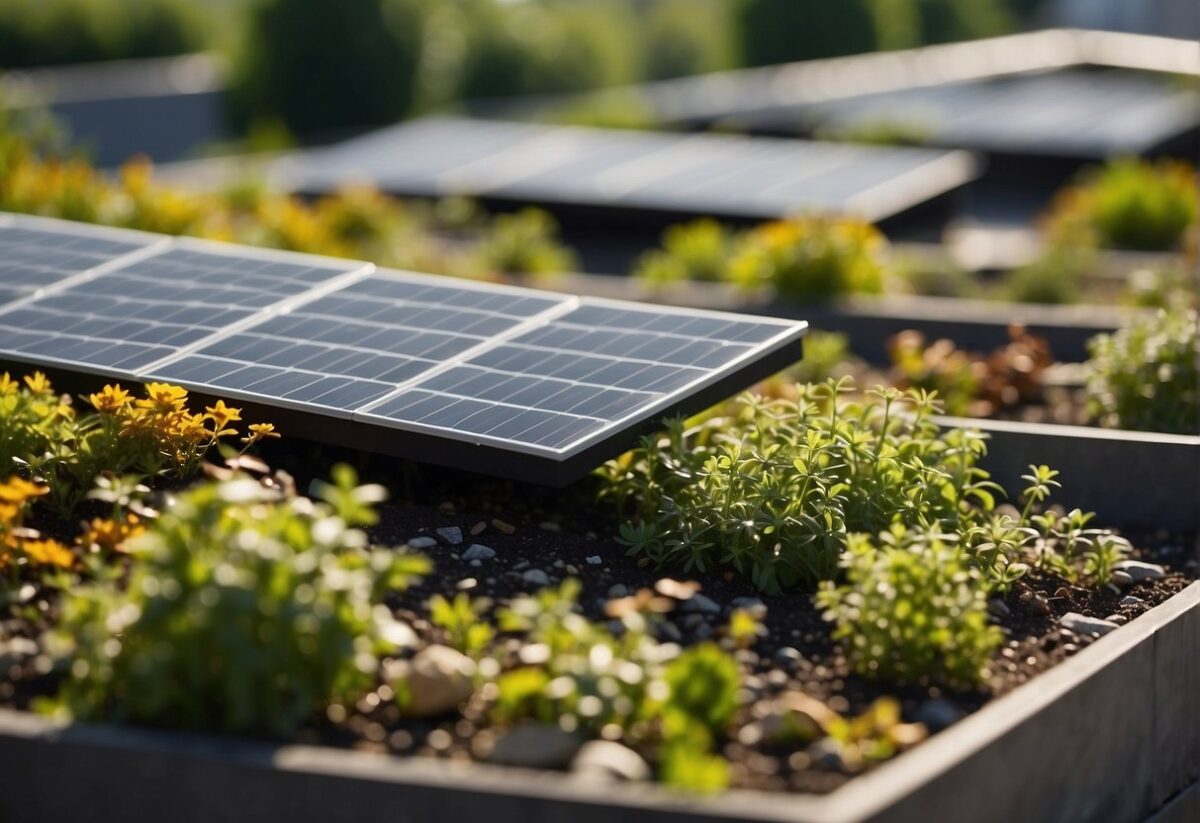As you consider the environmental impact of your home, one area that’s often overlooked is the roof over your head. Eco-friendly roofing is not just about using solar panels; it’s also about the materials that make up the structure of the roof itself.
Sustainable aggregates in roofing materials are becoming increasingly popular due to their durability and positive environmental footprint. By opting for such materials, you can significantly lower your home’s carbon footprint while enjoying a robust roofing solution that stands the test of time.
Sustainable aggregates are typically made from recycled materials such as plastic, rubber, or metal, which are engineered to reduce waste in the environment. These materials often provide better insulation than traditional alternatives and have the added benefit of reflecting sunlight, which helps in reducing your home’s energy costs. For example, some types of eco roof panels, designed to power your home by generating electricity from the sun, can be a game-changer for energy efficiency.
Moreover, the use of sustainable materials like metal, slate, and clay not only contributes to conserving natural resources but also offers a unique aesthetic appeal. With advances in roofing technology, these materials now come in a variety of finishes and colours, allowing you to personalise the appearance of your home without compromising on your eco-friendly principles. So, as you explore ways to modernise your home while being kind to the planet, consider the impact that eco-friendly roofing with sustainable aggregates could have.
Understanding Sustainable Roofing Materials
Choosing sustainable roofing materials is a crucial step toward making your home both environmentally friendly and efficient. These materials not only reduce your ecological footprint but also offer long-term financial benefits.
Benefits of Sustainable Aggregates
Sustainable aggregates for roofing are designed to minimise environmental impact. You’ll find that they enhance energy efficiency, translating to lower utility bills for your household. What’s more, these aggregates often have a longer lifespan than conventional materials, which means less frequent replacements and reduced waste over time.
Types of Eco-Friendly Materials
When selecting eco-friendly materials for your roof, you have a variety of options. Some of the most popular include:
- Solar Panels: By choosing solar panels for your roof, you can harness the sun’s energy, thereby reducing reliance on non-renewable power resources.
- Green Roofing: This refers to a roof that is partially or completely covered with vegetation, which provides insulation and promotes biodiversity.
- Metal Roofing: Metal roofs are not only durable but also highly recyclable, making them an attractive sustainable option.
- Slate and Clay Tiles: Natural materials like slate and clay have a long life and can be recycled, thereby reducing the need for new raw materials.
- Recycled Materials: Shingles made from recycled content can offer the look and performance of traditional materials without the added environmental cost.
Remember, the right choice for your roof contributes to a healthier environment and can be a savvy economic move in the long run.
Implementation of Green Roof Systems
When you’re looking to implement green roof systems, it’s crucial to understand the intricacies of design and to draw inspiration from successful examples.
Design Considerations for Sustainable Roofs
In designing your sustainable roof, you must consider the structure’s load-bearing capacity, as green roofs add significant weight. Choosing the right vegetation is also key; drought-resistant plants require less water, minimising maintenance. Incorporating sustainable irrigation methods, such as the use of greywater or rainwater, can significantly enhance the efficiency of water usage on your green roof. Materials play a pivotal role; opt for adaptive materials and additives that retain moisture and reduce the need for frequent irrigation. For comprehensive insights on irrigation techniques, look into Sustainable green roofs: a comprehensive review of… – Springer.
Case Studies: Success Stories
- Chicago City Hall: An exemplary success story, this green roof has reduced stormwater runoff and improved urban air quality. The implemented vegetation species were chosen for their ability to thrive in the windy, harsh rooftop conditions.
- Scholz Garten in Berlin: By prioritising native species and efficient water use, this rooftop garden illustrates the potential for biodiversity in urban areas. The technology and methods applied have helped in maintaining the ecosystem without excessive water consumption.
Challenges and Solutions
In pursuing eco-friendly roofing, you’ll encounter hurdles but also discover innovative solutions aimed at minimising environmental impact.
Overcoming Common Obstacles
Costs and Accessibility: Initially, sustainable aggregates for roofing can be more expensive than traditional materials, potentially deterring you from choosing them. However, the long-term savings on energy bills and the reduced need for maintenance balance the initial outlay. Moreover, local sourcing of materials like recycled glass or rubber can reduce costs and carbon footprint.
Technical Know-How: The installation of eco-friendly roofs requires specialist knowledge. To navigate this, seek out skilled contractors with experience in sustainable green roofs. These professionals are well-versed in the nuances of various eco-friendly materials and can ensure proper installation for optimal performance.
Innovations in Sustainability
Substrate Development: Modern solutions such as using volcanic ash as a green roof substrate have emerged, offering a naturally occurring, nutrient-rich medium that supports plant growth effectively while keeping maintenance low.
Solar Integration: Advances in integrating solar panels into roofing materials allow your roof not just to protect your home but also to generate energy. This dual functionality maximises both the utility and eco-friendly nature of your roof space.
In adapting eco-friendly roofing solutions, remember that each step forward contributes to a more sustainable future. With persistence, you can overcome common obstacles, and innovations in the field continue to evolve, providing new ways to enhance your roof’s sustainability.
Future Trends in Eco-Friendly Roofing
The roofing industry is rapidly adapting to the growing demand for environmentally friendly solutions. As you navigate through options for your home, consider the following trends that are shaping the future of eco-friendly roofing.
- Sustainable Materials: The use of recycled materials in roofing products is on the rise. Recycled shingles made from rubber, plastic, and wood fibre offer durability and a lower environmental footprint.
- Energy Efficiency: Roofs are expected to become even more energy-efficient. Innovations such as cool roofing, which reflects more sunlight and absorbs less heat, are set to become more mainstream.
- Solar Integration: The integration of solar panels into roofing materials, such as solar shingles, is becoming more accessible. This not only generates clean energy but also aligns seamlessly with your roof’s aesthetic.
- Green Roofs: The popularity of green roofs covered with plants is growing. These not only improve air quality and provide natural insulation but also support local ecosystems.
- Longevity and Durability: Future eco-friendly materials are engineered for longevity, thus reducing the need for frequent replacements and conserving resources.
Here’s a quick glance at what to expect:
| Trend | Benefit |
|---|---|
| Sustainable Materials | Reduces waste, lowers emissions |
| Energy Efficiency | Cuts energy costs |
| Solar Integration | Provides renewable energy source |
| Green Roofs | Enhances biodiversity, insulation |
| Durability | Minimises resource usage |
Your commitment to an eco-friendly roof not only contributes to a sustainable environment but can also provide long-term economic benefits. Keep an eye out for these advancements that can make your home greener and more efficient.

